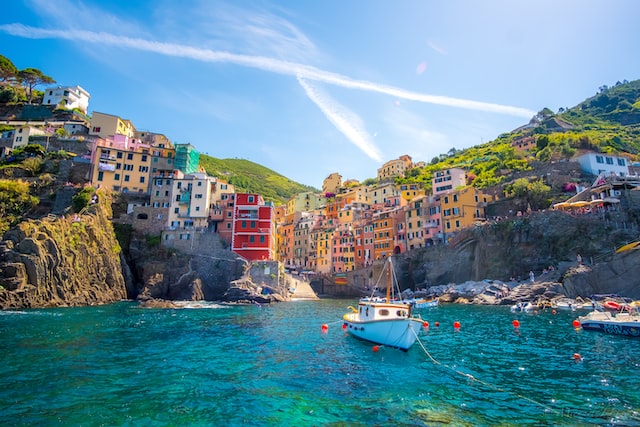Towns are quickly becoming “smart,” and the effect on people’s lives can be tremendous. Singapore’s smart traffic cameras limit traffic. They do this depending on the volume of the traffic. It consistently facilitates the drive of thousands of travellers. Kaunas, Lithuania, deducts the cost of parking from the financial balances of drivers. Many cities worldwide predict the timing of public transport with amazing accuracy. Also, free Wi-Fi is available across every urban community worldwide. This also includes Buenos Aires, Argentina, and Ramallah, Palestine. Today, improving the services of the urban community through progressive change is an immense industry. Yet, the possibility of a “smart city” involves more than the clever application of innovation in large cities. Technology must add to make towns more sustainable. It should also improve the personal satisfaction of those living there. Following are the few Smart Towns in the world that you must visit:
Singapore:
Singapore is a Southeast Asian city-state. It is the world’s second most populated country, with around 8,000 individuals per square kilometre. According to the maturing population, the legislature looks to digital advancements to bring profitability up in a previously progressed economy. Its Smart Nation vision aims to digitally gather data from all through the city. To do this, it utilizes sensors connected to aggregation boxes. Information gathered on traffic volume, or walker action is shipped to appropriate offices. The officials in those offices investigate the activity and convey it further. In Singapore, about 95% of homes have broadband access. The public WIFI carries the data to residents and the private sector to leverage the information for individual or business reasons. For planning, the National Research Foundation is driving the advancement of Virtual Singapore. It is a unique 3D city model and community-oriented information platform.
All public and private firms can access the 3D city model. It helps the firms to create tools for testing ideas and services, for example, simulating crowd scatterings from future sports venues. More than 80% of the inhabitants in Singapore live in public housing. Government offices are working with private firms to test smart home technologies. For example, home energy and water management systems and monitoring systems for the elderly. They are also incorporating smart technologies into the housing through a structure. The structure thinks about arranging environment structures and living. For example, engineers investigate wind streams, solar penetration, and shaded regions. It helps them plan and site new buildings. By 2022, the administration intends to actualize intelligent, energy-productive lighting for every public road. The government also aims to have solar panels introduced on the housetops of 6,000 buildings.
Oslo:
The Norwegian capital is highlighted on a worldwide list of smart urban communities. Its efforts to address environmental change are the main reason. Buildings represent 40% of energy utilization worldwide. Oslo is widely utilizing sensors to control lighting, warming, and cooling. The city’s objective is to cut emissions by 36% by 2020 and 95% by 2030. The country is creating opportunities in evolving electric vehicles and EV-charging technology. Currently, there are more than 2,000 charging stations for electric vehicles. The users don’t need to pay sale taxes and are entitled to free parking, charging, and transport on ships. Norway has reported plans to construct a maintainable smart city on 260 acres of land. The location of this city will be close to Oslo’s air terminal to create technology-driven networks. The administration intends to fuel the city with renewable power. Sensor-based systems will work the automatic street and building lighting alongside waste management and security. Electric vehicles will be allowed, yet self-driving vehicles are the better choice in the long run.
Barcelona:
Many initiatives are constantly happening in Barcelona. Those initiatives make it a major city on the top smart urban communities list. One significant city venture is to have citywide free wireless internet coverage. Presently, you can get free wireless internet almost everywhere in the city. Local administrations have dealt with making a series of applications to keep residents educated and occupied with what’s going in. Barcelona utilizes the Internet of Things technology. It includes smart sensors to diminish energy expenses and increase road safety. Keeping all of this in mind, it is nothing unexpected that Barcelona has the most energizing tech events around.
Copenhagen:
The Danish capital is pacing toward smart advancement coordinated with its destructive environmental policies and is a Smart Town. The incubator Copenhagen Solutions Lab got an honour in 2017. It developed a system that screens traffic, air quality, waste management, energy use, and different things and compares them in real-time. It links parking services, traffic signals, smart metering, and charging systems for electric vehicles. All these things continuously coordinate traffic and optimize energy use. The capacity to break down, measure, and contrast all of this information is intended to drive better productivity in delivering services. There are numerous cyclists in Copenhagen. Half of the city inhabitants use a bicycle to go to work. The residents utilize an application created from this data. The application guides them through city roads. It also tells them how quickly they must pedal to make the following green light. Another plan routes utilizing input from clients to improve recommendations. It additionally measures distance cycled and calories burned. Another online group warned of bike-related police movement, data cyclists can use to avoid fines.
Amsterdam:
The Dutch city has energetically grasped smart ideas and technology. It has made an open database with 12,000 datasets gained from each metropolitan locale. Clients can get information by utilizing Bluetooth gadgets through its IoT Living Lab, a 3,700-square-meter region fitted with IoT-empowered signals. The guides use LoRaWan to send information parcels to distances arriving at three kilometres. Numerous inhabitants use bicycles, but vehicle-sharing platforms pair drivers and travellers. The independent vehicles transport drivers through five intersections between a subway station and an office park. A public-private project is building a little smart grid in a housing development. This small smart grid will distribute and put away the power depending on request. Another smart grid project being worked on utilizes carbon dioxide to generate electricity. Amsterdam, a Smart Town, additionally sports smart lighting with dimmable LED lights. Walkers and cyclists, in any case, can utilize an application to increase the light when passing by. The lights faint after they pass.
Final Thoughts:
Smart Towns In The World provide a smart city, thus making it easy for people to live there. The authorities design such towns by keeping in mind modern innovations. Such towns comprise all the amenities needed for natural surroundings, transportation, waste management etc. A major proportion of the population in these places has been using technology in their day-to-day lives. Smart Towns will be the future of our world. It is because many cities have already applied these innovative technologies. Smart Towns and cities are equipped with advanced features, ranging from smart parking to efficient water management. If you want to visit one of them, we have listed the best. Happy travels!
Author Bio:
This article is written by Phil Williams. He is a content writer providing academic writing services online at theacademicpapers.co.uk. You can also get his admission essay writing services for getting admission to the universities of the UK.


